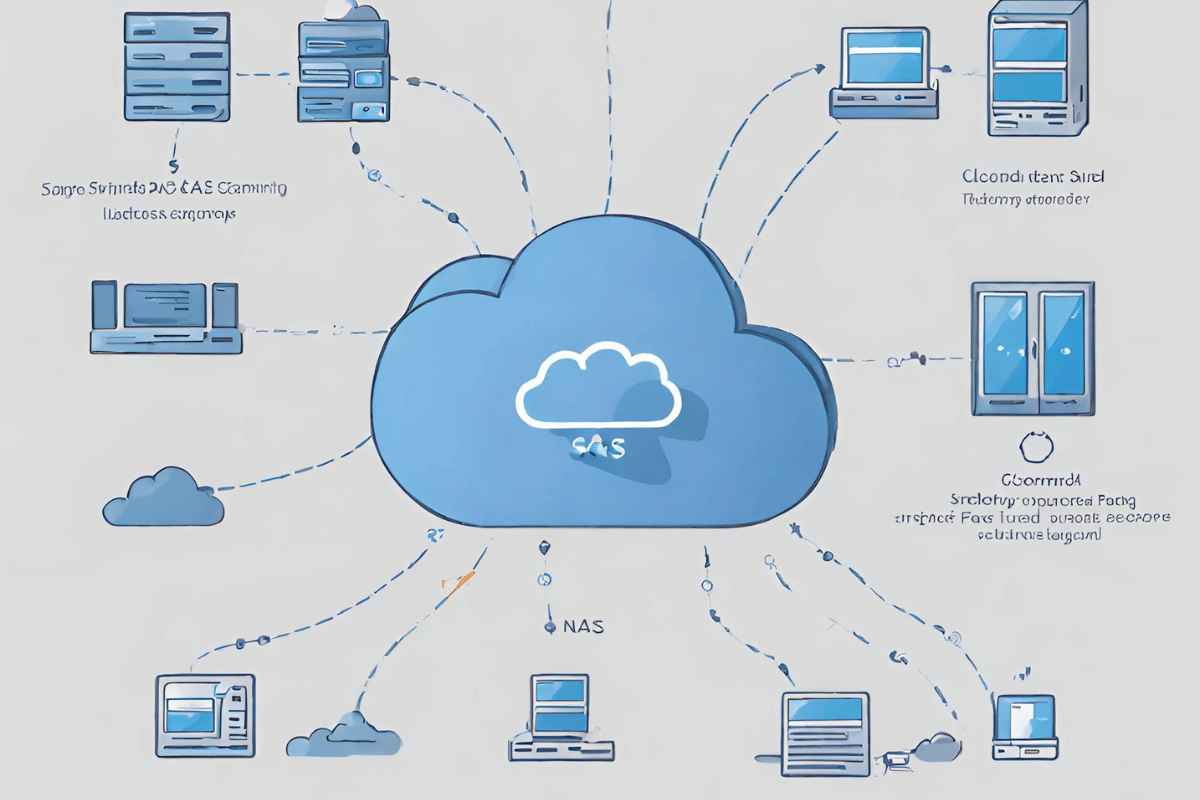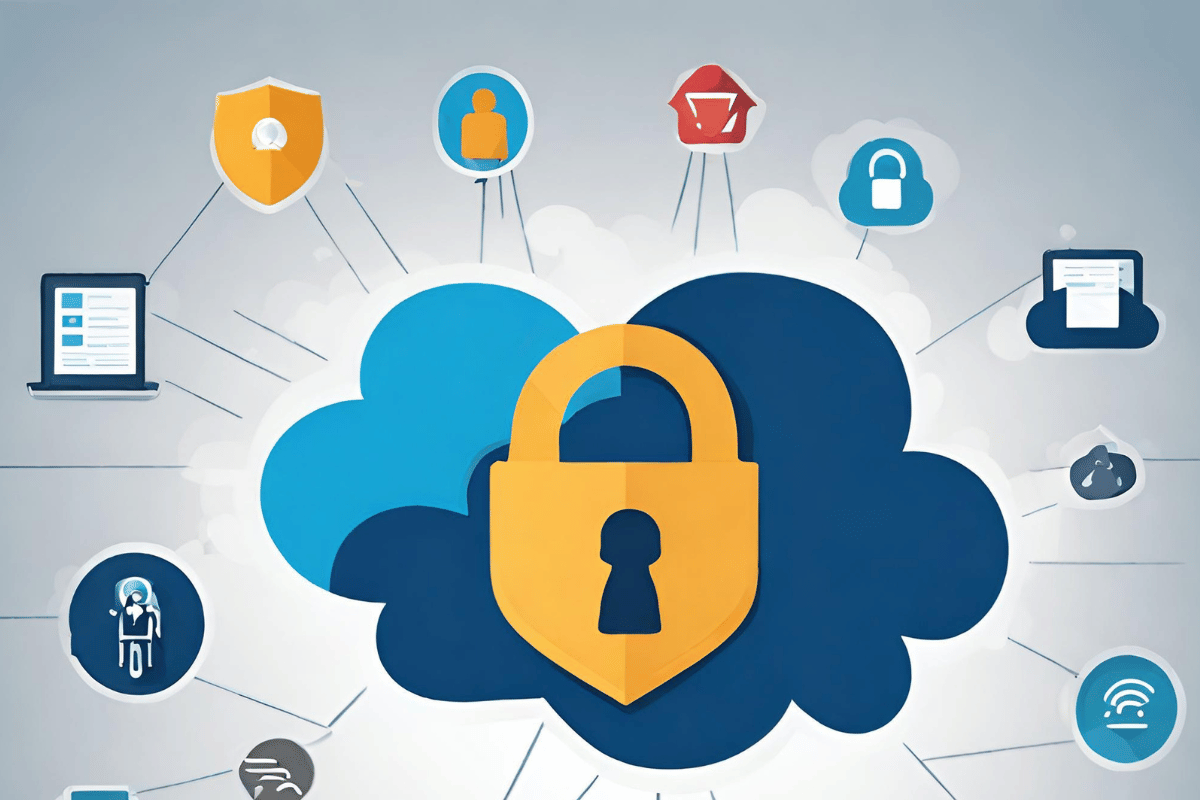Data security in cloud computing is paramount, with common risks including unauthorized access, data loss, and inadequate encryption. Key elements of cloud data security encompass robust encryption, identity and access management (IAM), and regular security audits. Best practices involve enforcing strong password policies, data classification, and implementing backup and disaster recovery plans. When selecting cloud service providers, trustworthiness, compliance with regulations, and understanding shared security responsibilities are crucial. To counter evolving threats, stay vigilant about zero-day vulnerabilities, provide security training, and consider using third-party cloud security software like Cloud Secure to protect your data effectively.
What is cloud computing?

Cloud computing is a versatile and cost-effective model that can provide services tailored to specific demands. The primary service models in cloud computing are Software as a Service (SaaS), Platform as a Service (PaaS), and Infrastructure as a Service (IaaS). SaaS involves deploying data by a cloud service provider accessible through web browsers. PaaS offers software programs for various tasks, while IaaS provides storage and virtual machines to enhance business capabilities.
While cloud computing shares similarities with grid computing, they are different. Grid computing integrates multiple resources and manages them using unified operating systems, primarily aimed at boosting computing performance. In contrast, cloud computing aggregates resources controlled by diverse operating systems, offering an improved data distribution mechanism.
The Advantages of Cloud Computing
Cloud computing has many advantages that have captured the attention of both the industrial and academic worlds. These advantages include location-independent resource pooling, rapid elasticity of resources, ubiquitous network access, and self-service capabilities. Cloud technology’s transformative power is revolutionizing how businesses operate globally, making cloud security a paramount concern.
Common Cloud Security Risks
Unauthorized Access
One of the primary risks in cloud computing is unauthorized access. Hackers can exploit vulnerabilities to enter your cloud storage, compromising sensitive data. Implementing stringent access controls is crucial to mitigate this risk.
Data Loss
Data loss is another significant concern. Critical data loss can be disastrous, whether due to technical glitches or human error. Regular backups and redundancy measures are essential to protect against this risk.
Inadequate Encryption
Encryption plays a pivotal role in securing data in the cloud. Weak or improperly implemented encryption can leave your data vulnerable. Ensure that your cloud service provider offers robust encryption options and uses them consistently.
Key Elements of Data Security in Cloud Computing

1. Encryption
Encryption is the cornerstone of data security in the cloud. It involves encoding your data so only authorized parties can decipher it. Whether your data is in transit or at rest, employing robust encryption mechanisms is non-negotiable. This ensures that the data remains indecipherable even if an attacker gains access.
2. Identity and Access Management (IAM)

Controlling who has access to your data is crucial. IAM solutions enable you to manage user identities, roles, and permissions effectively. Implementing strict access controls ensures that only authorized individuals can view or modify sensitive information.
3. Regular Security Audits and Monitoring
Constant vigilance is vital in the world of data security. Regularly audit your cloud infrastructure for vulnerabilities and weird activities. Utilize monitoring tools to detect and respond to potential threats in real-time. A proactive approach can mitigate risks before they escalate.
Best Practices for Cloud Data Security
1. Strong Password Policies
Weak passwords are a common entry point for cybercriminals. Enforce stringent password policies that require complex, regularly updated passwords. Consider implementing multi-factor authentication (MFA) for an additional layer of security.
2. Data Classification
Classify your data based on sensitivity and importance. This allows you to allocate resources and protection measures more efficiently. Highly sensitive data should receive the highest level of security.
3. Backup and Disaster Recovery
Data loss can occur for various reasons, from hardware failures to cyberattacks. Regularly back up your data and establish a robust disaster recovery plan. This ensures that even in the worst-case scenario, you can restore your data promptly.
Cloud Service Providers and Security
1. Choosing a Trusted Provider
Selecting a reputable cloud service provider is a critical decision. Established providers like Amazon Web Services (AWS), Microsoft Azure, and Google Cloud have extensive security measures. However, it’s essential to understand your responsibilities regarding security in a shared responsibility model.
2. Compliance and Regulations
Different industries have specific regulatory requirements for data security. Ensure that your chosen cloud provider complies with these regulations, and consider additional compliance measures specific to your business.
Cloud Security Solutions
Cloud Access Security Brokers (CASBs)
CASBs are specialized security tools that provide visibility and control over data transferred to and from the cloud. They help monitor and secure your data in real-time.
Data Loss Prevention (DLP) Solutions
DLP solutions help prevent the unauthorized sharing or leakage of sensitive information. They monitor data in the cloud and apply policies to prevent data loss.
Secure Socket Layer (SSL) Certificates
SSL certificates encrypt data during transit, ensuring that even if intercepted, it remains unreadable. Using SSL for cloud connections is a fundamental practice.
Evolving Threat Landscape
1. Zero-Day Vulnerabilities
The threat landscape is ever-evolving, with cybercriminals continually developing new tactics. Zero-day vulnerabilities, unknown to the software vendor, pose a significant risk. Stay informed about emerging threats and promptly apply patches and updates.
2. Security Training and Awareness
Human error remains a prevalent cause of security breaches. Provide ongoing security training to your employees, teaching them to recognize phishing attempts and other social engineering tactics.
Securing Cloud Service Providers With Cloud Secure:
Numerous cloud accounts offer similar services but vary in storage capacity. Popular names include Dropbox, OneDrive, Box Account, and Google Drive. Due to convenience, many users have transitioned from traditional USB drives to cloud accounts. Still, some remain hesitant due to security concerns.
Using third-party cloud security software can significantly mitigate emerging threats to data security.
- Download and install Cloud Secure on your system.
- Open the software after installation.
- Create and set a secure master password for your Cloud Secure account.
- The software will automatically detect previously stored cloud accounts (up to 4) on its user interface.
- If your preferred cloud account is not installed, you can download it and proceed.
- To secure a cloud account, activate the ‘ON’ button (indicated by the color green).
- Deactivating the protection (‘OFF’) makes the folder inaccessible from its original location.
- Access the protected folder through the software’s interface by clicking ‘View.’
- When unprotected, the folder returns to its original location.
Conclusion:
Data security in cloud computing is an imperative concern in today’s digital landscape. As cloud technology continues to reshape how we store, access, and manage data, it brings incredible advantages and significant security challenges. To safeguard sensitive information in the cloud, organizations must prioritize encryption, implement robust identity and access management, conduct regular security audits, and adhere to best practices such as enforcing strong password policies, data classification, and comprehensive backup and disaster recovery plans. Choosing a trusted cloud service provider and staying compliant with industry regulations are crucial steps, and specialized security solutions like Cloud Access Security Brokers (CASBs), Data Loss Prevention (DLP) tools, and SSL certificates are essential for bolstering data security.
FAQs:
How does cloud computing differ from grid computing?
Grid computing integrates resources with unified operating systems to boost computing performance, while cloud computing aggregates resources controlled by diverse operating systems, offering improved data distribution.
What are common security risks in cloud computing?
Common security risks include unauthorized access, data loss, and inadequate encryption. Unauthorized access can lead to data breaches, while data loss can occur due to technical glitches or human error. Weak encryption leaves data vulnerable to attackers.
What are the key elements of data security in cloud computing?
- Encryption: Encryption encodes data so only authorized parties can decipher it, ensuring data remains secure even if accessed.
- Identity and Access Management (IAM): IAM controls user access, roles, and permissions, limiting access to authorized individuals.
- Regular Security Audits and Monitoring: Vigilance is crucial; regular audits and monitoring help detect and respond to threats proactively.
What are Cloud Access Security Brokers (CASBs), and how do they enhance security?
CASBs are specialized tools that provide visibility and control over data transferred to and from the cloud. They monitor and secure data in real-time, helping prevent unauthorized access.
What are Data Loss Prevention (DLP) solutions, and how do they protect data in the cloud?
DLP solutions prevent unauthorized sharing or leakage of sensitive information by monitoring data in the cloud and applying policies to prevent data loss.
Why are Secure Socket Layer (SSL) certificates important for cloud connections?
SSL certificates encrypt data during transit, making it unreadable if intercepted, ensuring data remains secure during cloud transfers.
